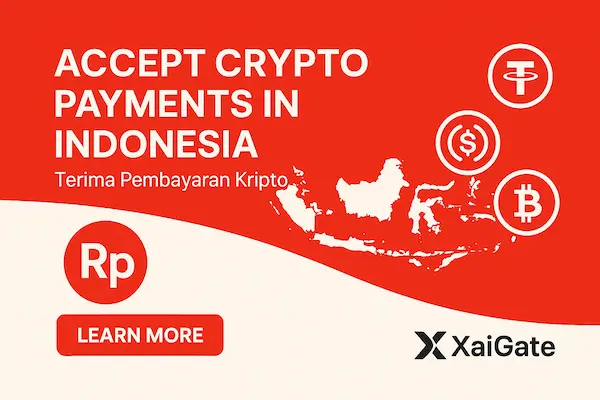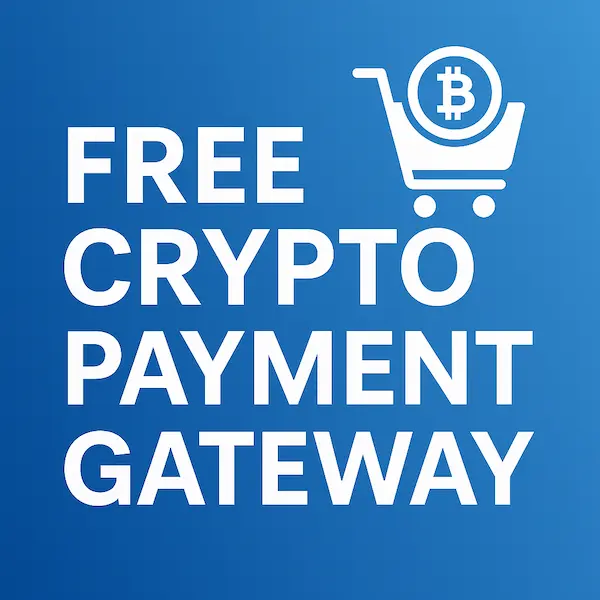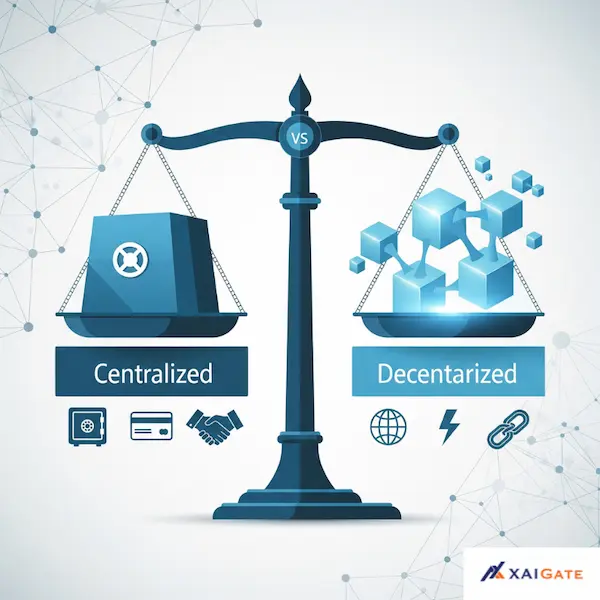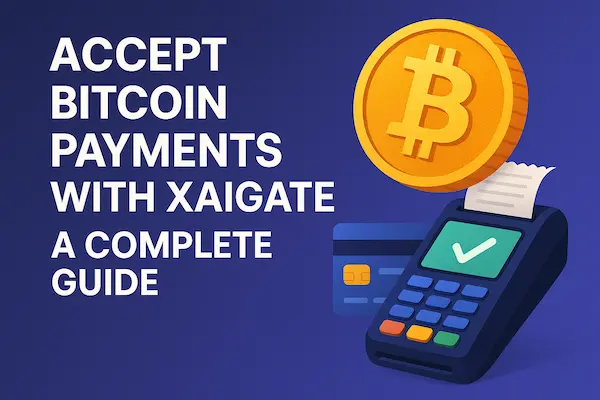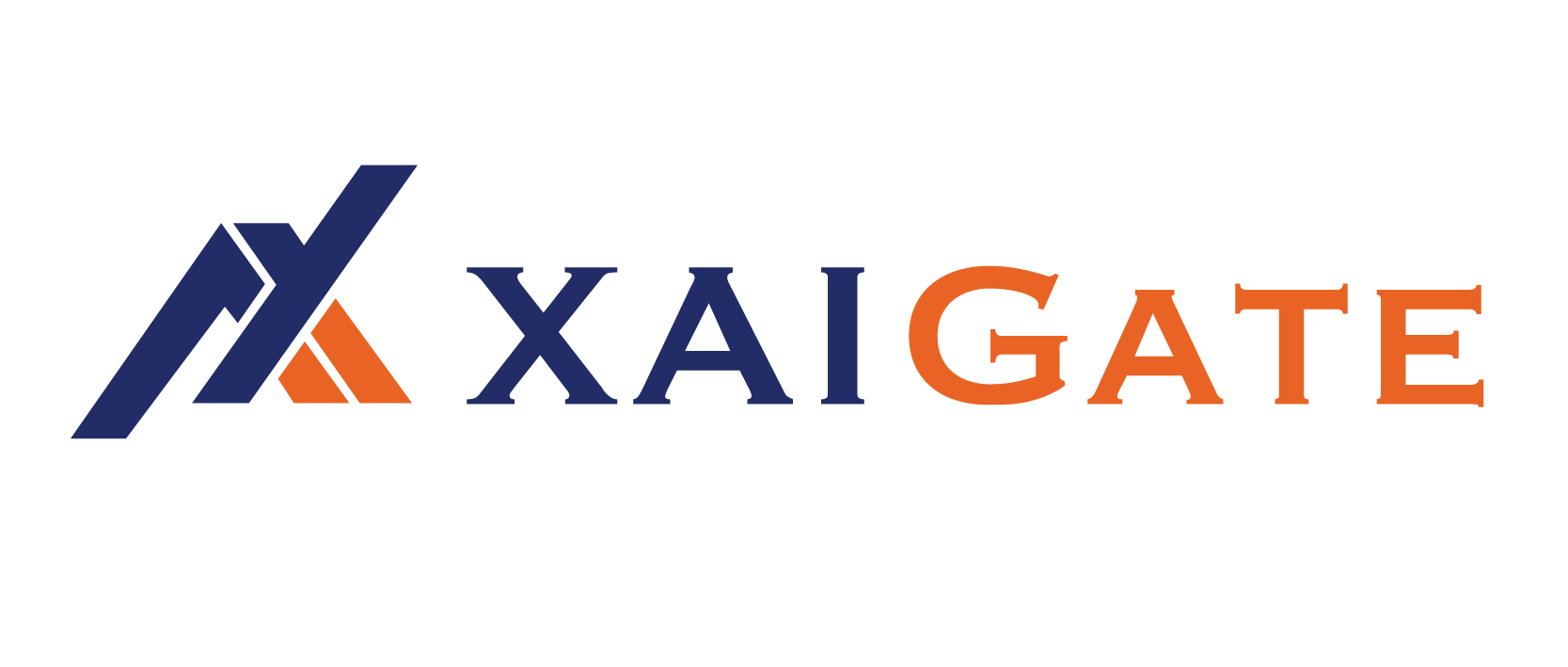According to a Statista analysis, the use of credit cards as a payment method is growing in popularity, particularly for online purchases. The number of credit cards in use in the US was expected to rise steadily by a total of 25 million between 2024 and 2029. It is predicted that the number would reach 1.1 billion cards in 2029, marking a new peak after fifteen years of growth. Interestingly, during the past few years, the number of credit cards in use has been steadily rising. However, we won’t deny the convenience of crypto payment gateway bringing to all users nowadays. Hence, let’s check out some information regarding acceptance payment methods from credit card to crypto payment gateway.

On the other hand, with the development of Blockchain technology, it is clear that more and more users are in need of using cryptocurrencies in transactions. It is undeniable that cryptocurrencies are hot today, but the implementation of transactions using cryptocurrencies is still very limited in many countries. Virtually cryptocurrencies such as bitcoin are not widely accepted as payment methods like other common payment methods such as credit cards and debit cards.
Contents
- 1 1. Accepting payments by credit card
- 2 2. Accept payment from Credit Card to Crypto Payment Gateway
- 3 3. The Shift From Traditional Cards to Borderless Payments
- 4 4. The Urgency of Adopting Crypto Gateways in 2026
- 5 5. Why the Shift From Card to Crypto Payment Gateway Is Accelerating in 2026
- 6 6. The Competitive Edge of Embracing a Card to Crypto Payment Gateway
- 7 FAQs on Card to Crypto Payment Gateway
- 8 Conclusion – The Future Belongs to Crypto Payment Gateways
1. Accepting payments by credit card
This payment method is considered a traditional payment method. It is accepted in almost all countries in the world. Thanks to big players like Visa, Master, JCB, American Express, and commercial banks, cross-border payments seem easier than ever.
Depending on your business, you can accept credit card payments in person or online in a variety of ways. If you are a merchant, you need a merchant account to collect the money and a payment processor to manage the transactions, regardless of the method you choose. Choose a payment service processor with unified commerce if you wish to provide your clients with a variety of payment choices. These can link your online, mobile, and in-person transactions.

Payments Made in Person
You must have a point-of-sale (POS) terminal with payment software and a card reader in order to take payments in person using a physical card. A countertop card reader can be used for a checkout counter or fixed till. A portable card reader is an alternative that may be used anywhere in the store.
The payment processor receives the transaction details from the POS terminal. After confirming the information, the processor completes the payment.
Online Payments
You can use a fully integrated merchant account solution to take online payments. As an alternative, you can combine various service providers to customize a system.
Customers must be able to choose from your products or services on your online marketplace. This may appear on a hosted page, your website, or a third-party marketplace.
Table 1: Credit Card vs. Crypto Payment Gateway
| Aspect | Credit Card Payment Gateway | Crypto Payment Gateway |
|---|---|---|
| Transaction Speed | 1–3 business days (depending on banks and intermediaries) | Near-instant settlement (seconds to minutes) |
| Fees | High (2–5% per transaction + hidden cross-border fees) | Low (often under 1%, especially for stablecoins) |
| Currency Handling | Limited to fiat currencies; expensive FX conversion | Supports global crypto assets and stablecoins with seamless cross-border transfers |
| Security | Relies on centralized banks and card networks; risk of chargebacks and fraud | Blockchain-based transparency, irreversible transactions, cryptographic security |
| Accessibility | Requires bank accounts, credit approval, and card issuance | Open to anyone with a crypto wallet; borderless by design |
| Chargebacks & Disputes | Chargeback-prone; merchants often face losses | No chargebacks; transactions are final and immutable |
| Compliance & Regulation | Mature legal frameworks; widely regulated worldwide | Emerging regulations; varies by country and region |
| Global Reach | Restricted by banking networks and geographical limits | Universal reach; borderless payments without intermediaries |
| Adoption | Long-established, familiar to most consumers | Growing rapidly, especially in e-commerce and digital services |
| Best For | Traditional businesses serving local or credit card–heavy markets | Forward-thinking businesses targeting global customers, freelancers, and crypto users |
2. Accept payment from Credit Card to Crypto Payment Gateway
Thanks to Blockchain technology and the growing demand of the majority of users who own a certain amount of cryptocurrency in their wallets, Crypto Payment Gateway is becoming more and more popular.
The expansion of payment providers and crypto-friendly legal changes are expected to propel the 82.1% increase in bitcoin payment adoption over the next two years, according to Statista. However, usage will continue to be specialized, reaching only 2.6% of people.
In the three years after the end of 2021, the number of cryptocurrency owners has almost doubled. By 2026, over 65 million Americans, or 28% of the adult population, will be cryptocurrency owners.
Of those who currently hold cryptocurrency, 67% intend to purchase even more this year, while 14% of those who do not aim to do so in 2026.

The top three most sought-after currencies among individuals who intend to purchase cryptocurrency in 2026 are Dogecoin, Ethereum, and Bitcoin.
46% of persons who are familiar with cryptocurrencies think that Donald Trump will encourage the widespread adoption of cryptocurrencies in the United States, and 60% of them think that the value of cryptocurrencies will rise during his second term as president.
Despite the recent surge in public interest in cryptocurrencies, 40% of cryptocurrency owners remain unconfident in the technology’s safety and security. Almost one in five bitcoin owners have experienced problems getting access to or taking money out of custodial services.
3. The Shift From Traditional Cards to Borderless Payments
As digital commerce accelerates in 2026, businesses are under pressure to modernize their payment infrastructure. Relying only on credit card gateways is becoming outdated, especially when global consumers demand faster, cheaper, and borderless transactions. Crypto payment gateways are emerging as a natural evolution—bridging the gap between convenience and innovation.
Why Credit Cards Still Dominate
Despite new technologies, credit cards remain familiar to millions of users. Their long-standing trust and integration into global financial systems make them a convenient option for consumers.
The New Appeal of Crypto Gateways
Crypto gateways, on the other hand, are transforming the way merchants reach global customers. With stablecoins and blockchain rails, payments can now bypass banks, reduce conversion losses, and settle instantly.
Real-World Impact in 2026
E-commerce platforms and freelancers are already seeing the benefits. From Asia to Latin America, businesses that adopt crypto gateways are serving global clients more efficiently than ever before.
Table 2: Consumer Perspective
| Factor | Credit Card Users | Crypto Gateway Users |
|---|---|---|
| Trust & Familiarity | High, well-established | Growing, especially among Gen Z & freelancers |
| Speed of Payment | Delayed (1–3 days) | Instant settlement |
| Cross-Border Access | Limited by banking systems | Borderless and global |
| Hidden Fees | Common, especially FX charges | Transparent, blockchain-based |
4. The Urgency of Adopting Crypto Gateways in 2026
The global economy is shifting rapidly. Inflation, banking restrictions, and the rise of digital-first consumers are forcing businesses to rethink payment strategies. In this landscape, crypto gateways are not just a trend—they are becoming a necessity for businesses that want to stay competitive.
Rising Costs of Credit Card Processing
Merchant fees are rising as card networks tighten compliance and anti-fraud checks. For small businesses, these fees eat into already slim profit margins.
Crypto as a Cost-Saving Solution
With crypto gateways, merchants pay lower fees and gain immediate liquidity. Stablecoins, in particular, have become a powerful tool to protect businesses against currency volatility and inflation.
Regulation and Trust in 2026
Governments are no longer ignoring crypto. Regulatory clarity in the U.S., EU, and parts of Asia is creating safer adoption paths for businesses, making 2026 a turning point for mainstream crypto payments.
Table 3: Merchant Perspective
| Aspect | Credit Card Gateways | Crypto Payment Gateways |
|---|---|---|
| Processing Fees | 2–5% per transaction | 0.5–1% average |
| Settlement Time | Days, depending on banks | Seconds to minutes |
| Regulatory Status | Stable, but costly compliance | Emerging clarity, lower barriers |
| Market Opportunity | Mature, saturated | Expanding rapidly with global demand |
5. Why the Shift From Card to Crypto Payment Gateway Is Accelerating in 2026
As online transactions grow more global and borderless, merchants are reassessing their reliance on traditional credit cards. The move from card to crypto payment gateway adoption is no longer a distant vision — it’s happening now, driven by both consumer demand and industry pressure.
1. Rising Costs of Card Transactions
Credit card fees, chargebacks, and cross-border costs are eating into merchant margins. By contrast, crypto gateways streamline settlement with lower fees and instant finality.
2. Consumer Demand for Stablecoins
With stablecoins like USDT, USDC, and PYUSD pegged to the dollar, users enjoy the familiarity of fiat with the speed of blockchain. Customers are actively seeking casinos, e-commerce shops, and service providers that integrate card to crypto payment gateway solutions.
3. Regulatory Momentum
Governments in the U.S., Europe, and Asia are updating frameworks for digital assets. Clearer rules are giving businesses confidence to explore alternatives to legacy card systems.

6. The Competitive Edge of Embracing a Card to Crypto Payment Gateway
Businesses that integrate crypto payments in 2026 are not just keeping up with trends — they are securing a real competitive edge. Early movers are already seeing tangible benefits in customer acquisition and retention.
Instant Global Reach
Unlike credit cards, which may be restricted in certain regions, crypto payment gateways enable universal access. A business in Vietnam can receive payments from a client in Brazil within minutes.
Enhanced Security and Trust
Blockchain verification reduces fraud risks and removes intermediaries prone to data breaches. This gives merchants and customers alike greater peace of mind.
Meeting the “Now Economy” Expectations
Consumers increasingly expect instant gratification. The shift from card to crypto payment gateway aligns with the demand for immediate settlement and transparent tracking.
Preparing for the Next Wave of Innovation
Web3 gaming, tokenized assets, and borderless digital identity systems all depend on seamless crypto payments. Businesses adopting these gateways today are preparing for the ecosystems of tomorrow.

FAQs on Card to Crypto Payment Gateway
1. What does “card to crypto payment gateway” mean?
It refers to a system that allows users to convert traditional credit or debit card payments directly into cryptocurrency transactions through an integrated payment gateway.
2. Why are businesses shifting from card to crypto payment gateways in 2026?
High credit card fees, cross-border limitations, and growing consumer demand for stablecoins are driving businesses to adopt crypto payment gateways for faster and cheaper global transactions.
3. How does a card to crypto payment gateway benefit online casinos?
Online casinos benefit from lower transaction costs, instant deposits and withdrawals, global accessibility, and reduced risk of chargebacks compared to card-only systems.
4. Are card to crypto payment gateways secure?
Yes. They use blockchain verification and encryption, which reduces fraud risks and eliminates the need for multiple intermediaries that often cause data breaches.
5. Which cryptocurrencies are most commonly supported in card to crypto gateways?
Stablecoins like USDT, USDC, and PYUSD are the most widely supported because they combine the stability of fiat with the speed of blockchain settlement.
6. Can customers still use their credit card if a business switches to a crypto payment gateway?
Absolutely. Customers can pay with their card, and the gateway automatically converts the payment into crypto, offering flexibility without disrupting user habits.
7. What industries are adopting card to crypto payment gateways fastest?
E-commerce, online gaming, travel services, and digital content platforms are leading adopters due to their need for borderless, low-cost transactions.
8. How will regulations affect the growth of card to crypto payment gateways?
Global regulatory clarity in 2026 is creating a safer environment for adoption, giving both businesses and consumers more confidence to transition from cards to crypto.
Conclusion – The Future Belongs to Crypto Payment Gateways
Today, almost ⅔ of the US population says they are familiar with cryptocurrencies. Even big players like banks and financial institutions acknowledge the convenience and development that cryptocurrencies bring. Perhaps, in the not too distant future, accepting cryptocurrency payments will be used more widely in many different fields.
The transition from credit cards to crypto payment gateways is no longer a distant forecast—it is happening right now. With global e-commerce expanding and digital-first consumers demanding instant, borderless, and low-cost payments, businesses that fail to adapt risk being left behind. In 2026, stablecoins and blockchain technology are setting new standards for trust, speed, and financial inclusion.
Why This Shift Matters Today
Traditional credit card systems may still hold market familiarity, but their high fees and slow settlement are increasingly unsustainable. Crypto payment gateways, supported by evolving regulations and mass adoption, represent a strategic advantage for businesses that want to scale globally.
Quick Recap – Credit vs. Crypto Gateways
| Factor | Credit Card Gateway | Crypto Payment Gateway |
|---|---|---|
| Transaction Fees | High (2–5%) | Low (0.5–1%) |
| Settlement Time | Days | Seconds–Minutes |
| Cross-Border Reach | Limited | Borderless |
| Security | Centralized, risk of chargebacks | Decentralized, immutable |
| Adoption Trend | Stable, saturated | Growing rapidly in 2026 |
The market is moving fast. From online retailers to freelancers and global platforms, crypto payment gateways are unlocking opportunities that credit card systems cannot match.
If your business wants to cut costs, expand globally, and meet the expectations of the next generation of customers, now is the time to act. Start exploring Crypto Payment Gateway solutions today—and position your brand at the forefront of digital commerce in 2026.
We may also be found on GitHub, and X (@mxaigate)!


